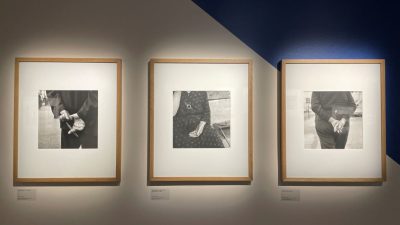Schematic plots spangled with flashy arias, opera as psychotherapy, and castrati, the pop stars of Baroque music, were the subject of our conversation with director Balázs Kovalik, who is presenting Artaserse, an opera by Hasse, with masters students from the Theaterakademie August Everding in Munich and the participation of the Hofkapelle München. The premiere was given at the opening of the newly renovated Markgräfliches Opernhaus of Bayreuth, and a couple of days later the opera could be seen at the Budapest Spring Festival.
Why is Artaserse performed so rarely? Is it because Baroque music is less popular, or is it difficult to work with the piece?
The music is of high quality, and Metastasio’s plot has poetic value, but extremely trite. There are several dozen such works, and these libretti may have been set by as many as eighty or ninety composers. This work, with six characters, a love interest and a murder scene, had the same role in the Baroque as soap operas do today: it provided a series of easily intelligible scenes of intrigue. And it provided a platform for star singers, and for elevated, philosophical musings. In those days folk treated opera differently from today: people would come and go during the performance, eat, drink, and chatter. The auditorium lighting was not dimmed, and it was something like a variety show. Why aren’t these operas performed today? Many of the works are no longer relevant. What’s more, all of them are long, and today’s audience would only sit through them at a festival.
“As a human being and as a director it was a wonderful experience to rehearse Mozart for four months. After Péter Oberfrank had conducted the three Mozart operas (twelve hours altogether), we all felt as though we were floating on air, and had fallen into a trance. I had been a teacher for ten years, and the performance was a huge achievement for me. Many of my students were performing. Many folk tried to persuade us to continue as a company, but this was not to be, so today we can look back on a fantastic festival production.”
Balázs Kovalik on Mozart Marathon, March 26, 2016 at Millenáris
What did you find exciting in a “soap opera” like this?
The premiere will be in the Markgräfliches Opernhaus in Bayreuth, where the renovated building will open with this performance. We felt it was an incredible opportunity when three years ago our Munich Academy was invited to do this. In 1748 Artaserse was one of the operas performed at the opening, so the piece was a given. We tried to find out what made this story interesting back then: Darius, one of Serse’s [Xerxes I of Persia] sons, is accused of murdering his father, and his brother Artaserse rashly condemns him to death, thus inheriting the throne. But the new king is troubled by whether his judgement was just, particularly when his best friend Arbace is accused by his own father (who is actually the real culprit). Meanwhile there are of course women, who are in love either with the condemned man, or with Artaserse…

Balázs Kovalik, photo by Attila Nagy
What did you decide, what makes the piece interesting in 2018?
To this day musicologists and historians don’t actually know which of the Hasse operas performed at the inauguration, Ezio or Artaserse, the public saw first. In fact, in all probability they only performed excerpts from each work, because the celebrations, the banquet, dance, and merrymaking was more important. With this in mind, we used the pasticcio form popular at the time to construct a new story from Hasse’s two stage works and the only extant opera by Wilhelmine, daughter of King Frederick Wilhelm of Prussia, and wife of the Margrave of Brandenburg-Bayreuth. It was she who had commissioned the construction of the theatre. She was a multitalented person: she wrote, painted, composed, and as the first intendant of the new opera house she had a well-thought out concept behind the programmes for the celebratory event. All three works contain references to moments in Wilhelmine’s life: the self-sacrificing, loving sister, the hysterical arguments between her parents, the tyrannical father forcing his daughter to marry, who even condemns his own son to death. Her father married off Wilhelmine against her will to the Margrave of Bayreuth. Her brother, later Frederick the Great, was tormented and condemned to death, and by way of punishment had to watch the execution of his best friend. You might say that we are staging an exciting docu-opera.
Were the students taken on so they would be suitable for the roles in the performance?
Not in the least. In the entrance exams we were concerned not with the needs of the planned productions, but with the quality of the students as singers. Thus the vocal makeup of the class at present is not ideal for the performance of a Hasse opera. These works have many roles for castrato males, and deep female voices. We have selected the best of the arias that our students can perform most satisfactorily, or in which the extreme registers can be substituted by other voices, such as soprano, or mezzosoprano.
Why were there so many castrato roles (who however mostly played male protagonists) if in the 18th century women were already allowed to sing on stage?
Small courts like Bayreuth could only make contracts with a few singers, and it was the job of local composers to write the opera for those voices. The cast of contemporary operas thus depended on the register of the singers in the company, and castrato singers were considered a rare treasure. Church choirs of children tried to conjure up the sound of angels. This childlike tone can be preserved by castration, and folk were not bothered about whether the boy wanted to remain angelic to the end of his life. Not every castrato became famous, but the best were feted like pop stars. Today there is a misconception that the operation caused the castrati to become homosexual. This is incorrect. Although the operation altered the way they grew (they usually became tall and corpulent, while the head remained small), being so unusual brought them star quality, attracting to their beds many a lady-in-waiting or countess.
Author: Katalin Szemere
This article first appeared in BSF Magazine, published by Budapest Spring Festival. To view the magazine in full, please click here.


























